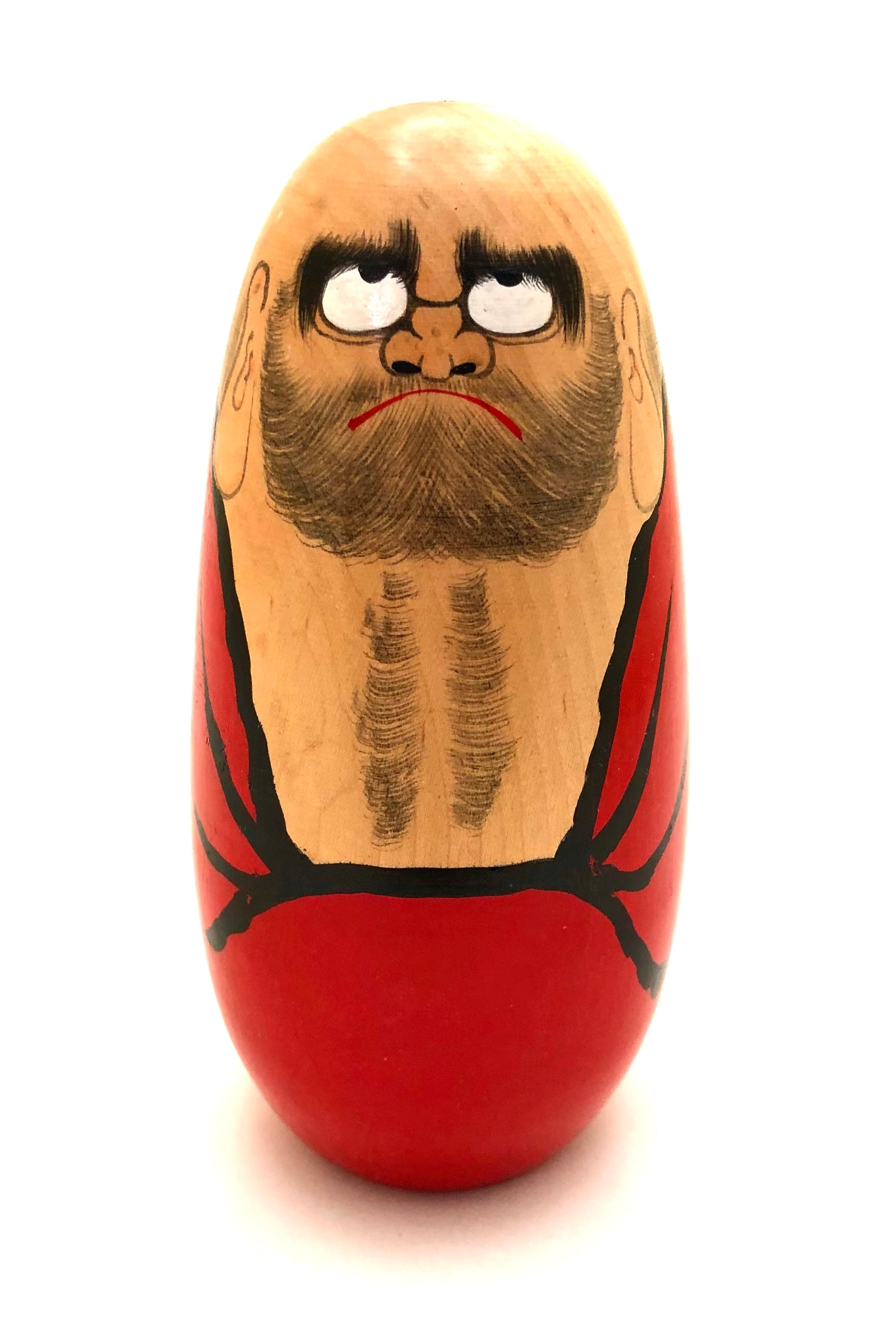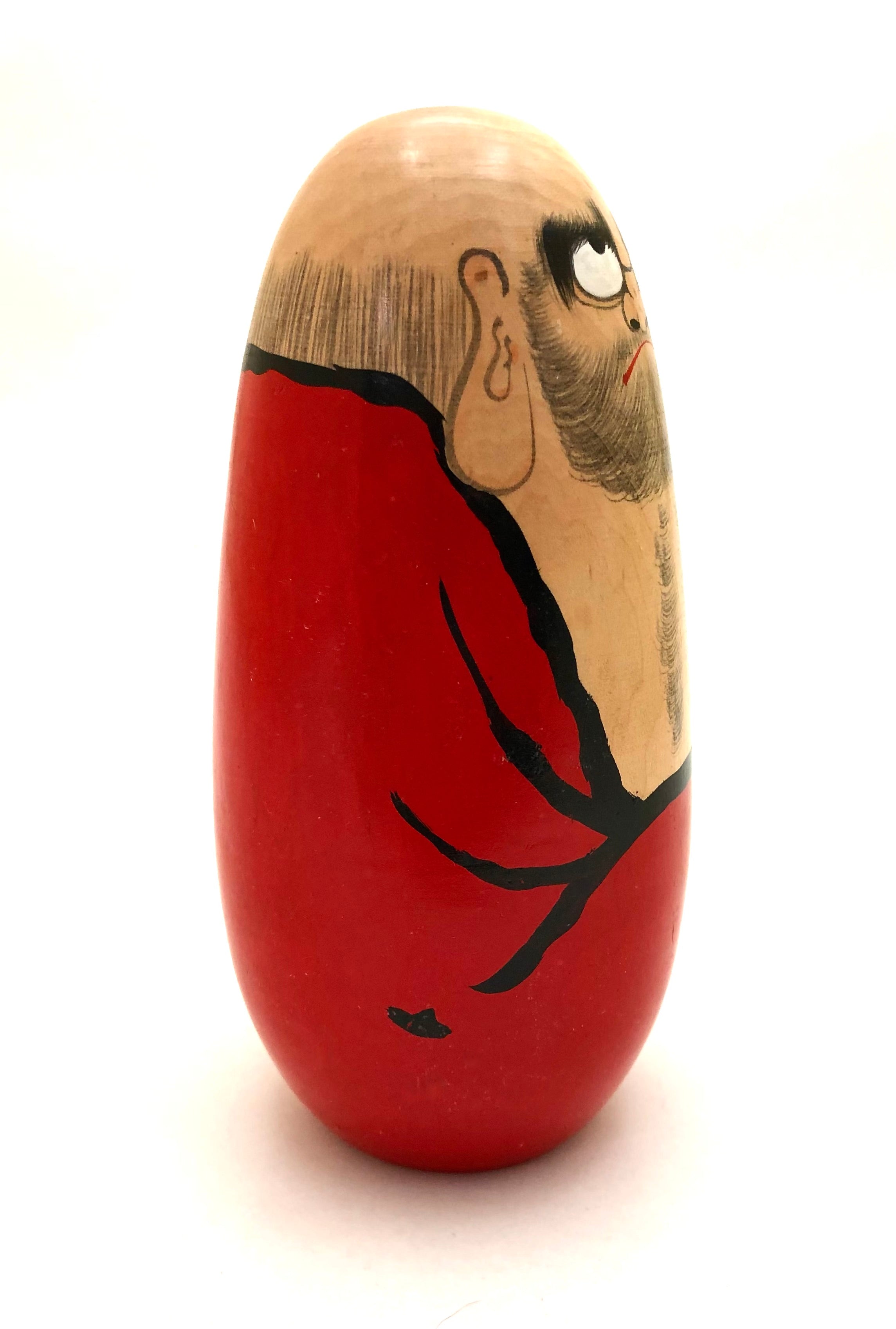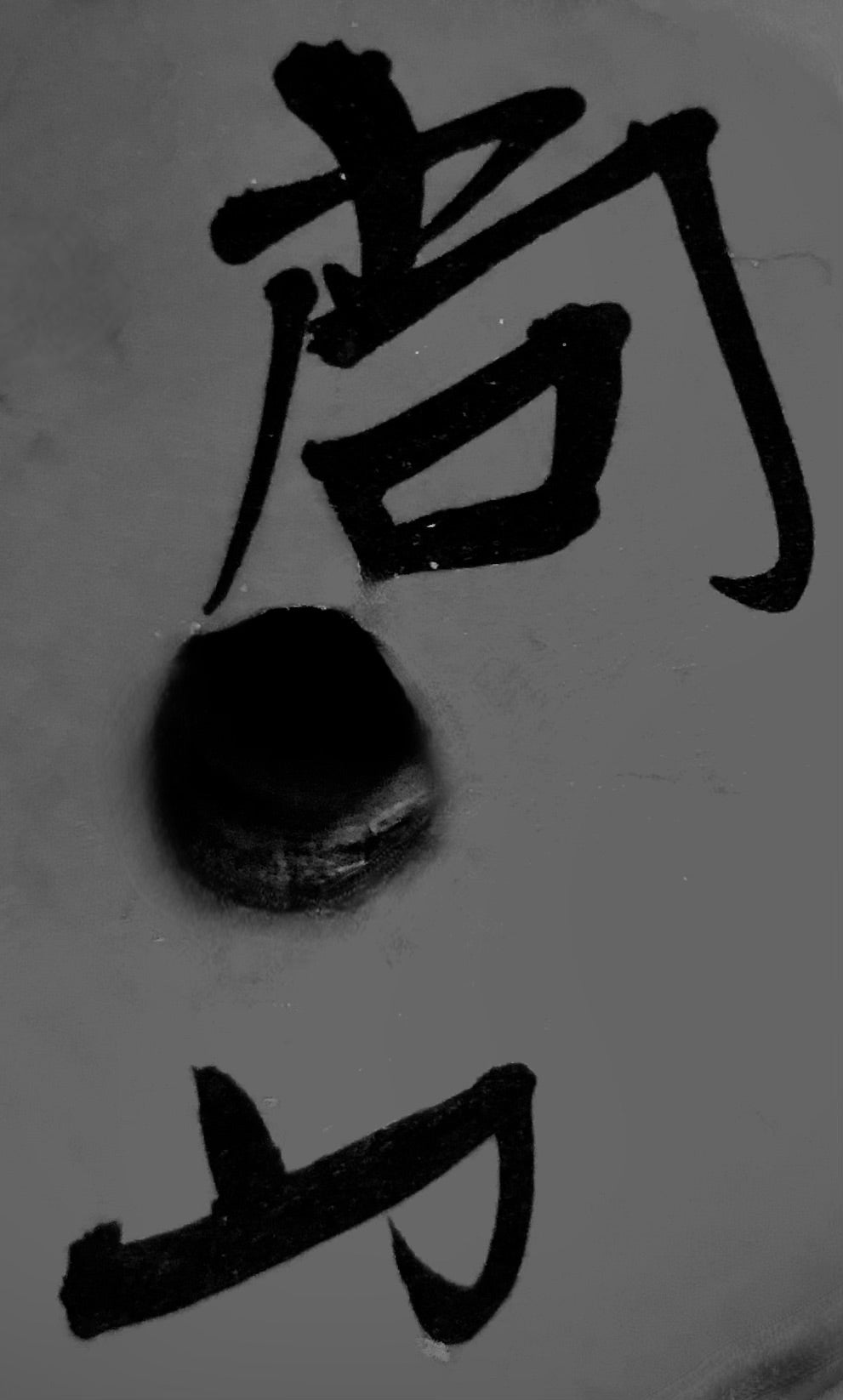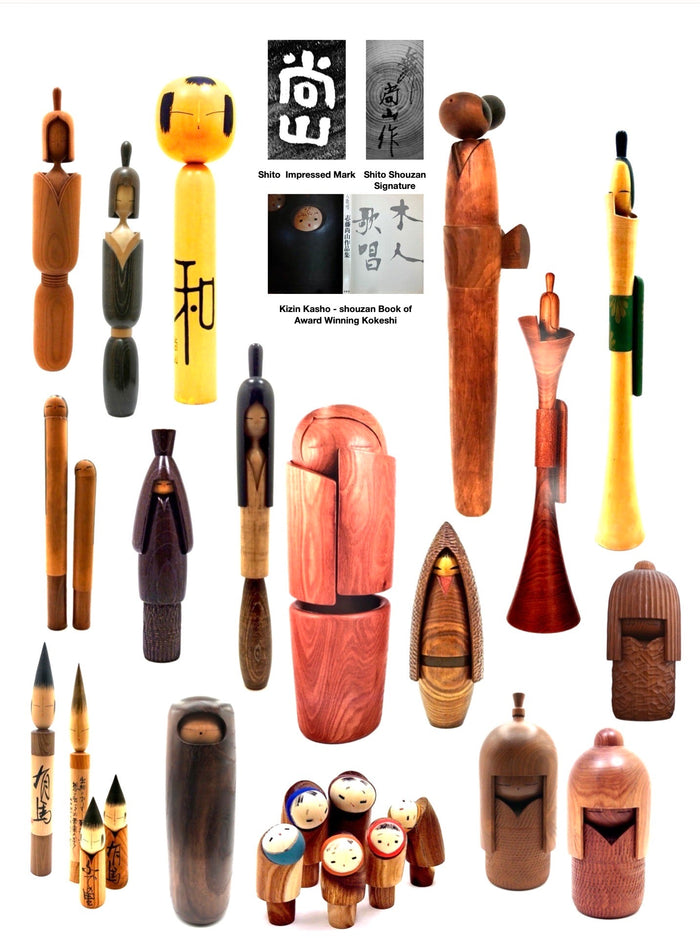


Vintage Japanese Daruma | Bodhidharma Kokeshi by Shouzan, Shido
Dimensions: 7-0”h
This is an unusual subject for Shouzan-san (1932-1995), and a take-off of the “roly-poly” doll seen at festivals throughout Japan. Daruma introduced his teachings as the religion of Zen Buddhism. Japanese stories about Daruma, (Bodhidharma’s name in Japan), go far beyond Asian legends — they are overlaid with a wealth of mythology and superstition involving popular culture and local Japanese folkloric motifs related to astral deities, gods of the crossroads, endemic spirits, fertility, and more. One of the theories behind this choice in the design is that it derives from the fact that, in the past, those who wanted the god residing in the doll to help them achieve their goals. It is characterized by a minimalism born of Japanese aesthetics and an appropriate shape for the lathe-turned and hand-painted Kokeshi doll. Shouzan-san won the prestigious Prime Minister's Award, the most coveted recognition by kokeshi artists. The piece is hand signed in script on the bottom of the doll as opposed to the impressed stamp which is typically for mass-produced pieces.
Here are the features of this Daruma offered in this listing: The body, shrouded in his robe is colored “Red” is the dominant color of the original, traditional figures because it’s believed that Bodhidharma wore red robes and because red is a very auspicious color in most Asian cultures signifying energy and good health. The beard and eyebrows painted on the doll are meant to reproduce Bodhidharma’s, (Daruma) facial features, but they do not serve a merely aesthetic purpose. Its eyes are one of the most noticeable features of the Daruma is its blank glance, (his pupils are very small looking upwards). The figure has extremely large ears and a downturned mouth showing a serious attitude with black graphics, and missing legs and arms, as a reminder of Bodhidharma, (Daruma) losing his limbs in his quest to reach enlightenment through self-sacrifice and meditation.
For further information on this artist go to: https://mingeiarts.com/collections/artisan-woodworker-shido-shozan-1932-1995
Condition: Excellent meaning the piece is perfect, totally original, and complete with no restoration, or discoloration and retains its wonderful patina which suggests a degree of wear that corresponds to its vintage. The doll meets all the standards of the collectible Vintage Sosaku Kokeshi by the Artist Shouzan.

Artisan
Woodworker: Shido, Shouzan
1932-1995
Biographical History:
Shouzan began making Sosaku Kokeshi in 1959, soon after he graduated from Chuo University with a law degree. He is considered by Kokeshi collectors and critics alike to be arguably the most influential artist in the world of Sosaku Kokeshi doll-making. Shido-san’s main focus was depicting unadorned Northern girls in the traditional “Mino”, or Snow Coat, but he also produced tall, thin dolls, which were sparsely decorated. His keen sense of design, minimal use of color, and simple elegant shapes set him apart from his peers, making him one of the most collectible artists emerging from the creative period of the ‘60s winning various awards since 1961. He served as a judge of the All Japan Kokeshi Contest from 1970 to 1976. During that time Shozan published a book entitled Kizin Kasho comprising examples of his award-winning Kokeshi. His dolls have been collected and exhibited worldwide and winner of the Prime Minister’s Award, among many other awards.
Collector's note – descriptive qualities, standard characteristics & ornamentation styles:
Shito-san loved studying the use of combining different types of wood to gain the desired effect and to give dimension to his pieces. He also enjoyed creating slender, tall dolls to support the fact that they resemble the tall, thin trees seen throughout Japan. He incorporated a repetitive textural pattern called ‘Harmonic Chatter work’ to enhance the natural qualities of the wood in many of his works. He particularly enjoyed the textural qualities of ‘Chattering’ on the rain/snow coat, (Minomushi), which is a favorite theme, executed with minimal painted ornamentation, with an emphasis on the natural wood. In general, it is said that Japanese culture is one of modesty and humility. Occasionally saw different types of headdresses, one of which he called a ‘Tsunokakushi’, which is a wide headdress or hood, that covered elaborate hairstyles. We are told that the Japanese people regulate their behavior and response by reading faces and the eyes of others. Here, as well as elsewhere, you will see many examples of different characteristics of the eye's expressions. His most famous doll, which was considered a favorite was called “Mai”, a dancer, which was an elegant and slender doll with a beautifully formed Kimono focusing on traditional hair design (Mage) with an emphasis on a brightly colored “obi” which brings forth the best use of complex geometry to create traditional Japanese clothing elements which were created in 1970.
Shito-san was a prolific artist/woodworker of Kokeshi dolls some of which were whimsical, some focusing on calligraphy citing haiku (poems). We additionally see unusual subjects focused on Zen Buddhism and figures of Daruma, (Bodhidharma) of which most were made in a “roly-poly” type figure seen throughout festivals in Japan.
Explore & Learn More about Woodworker: Shido, Shouzan